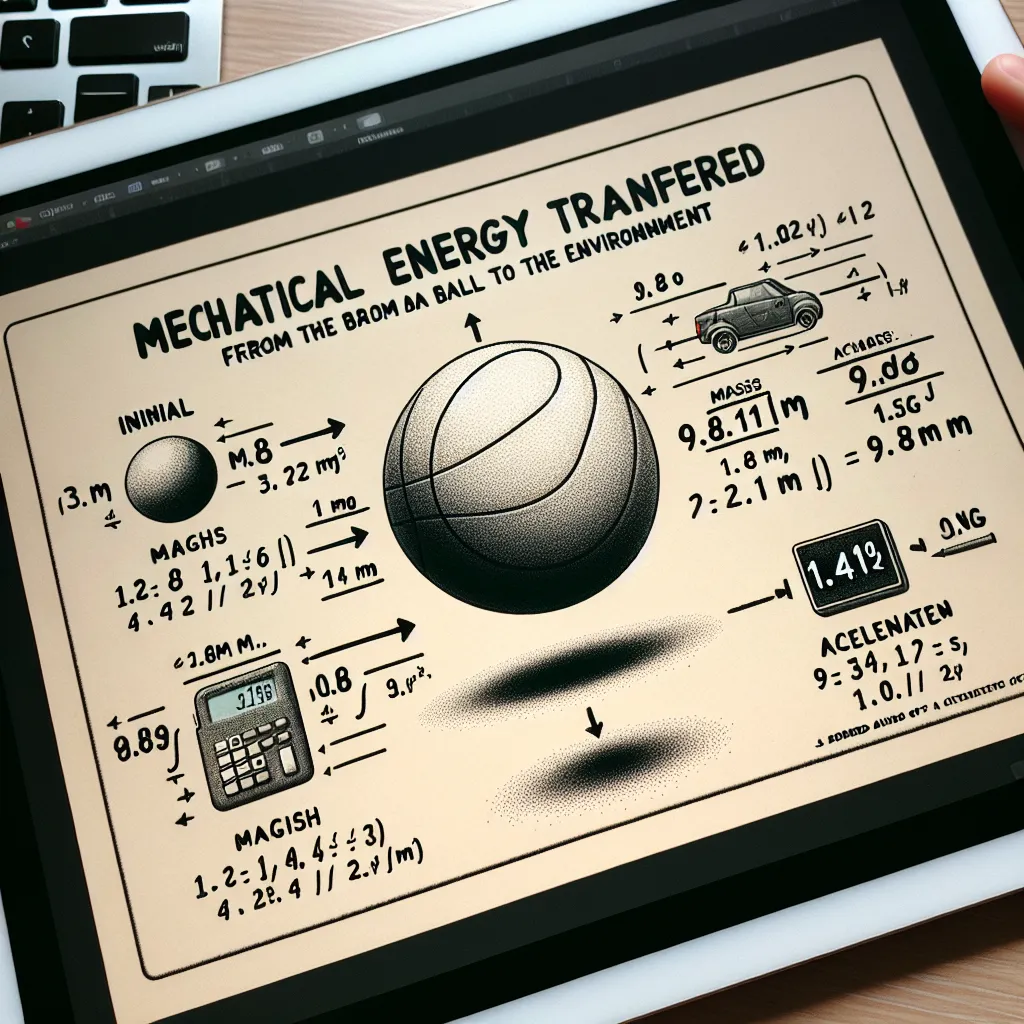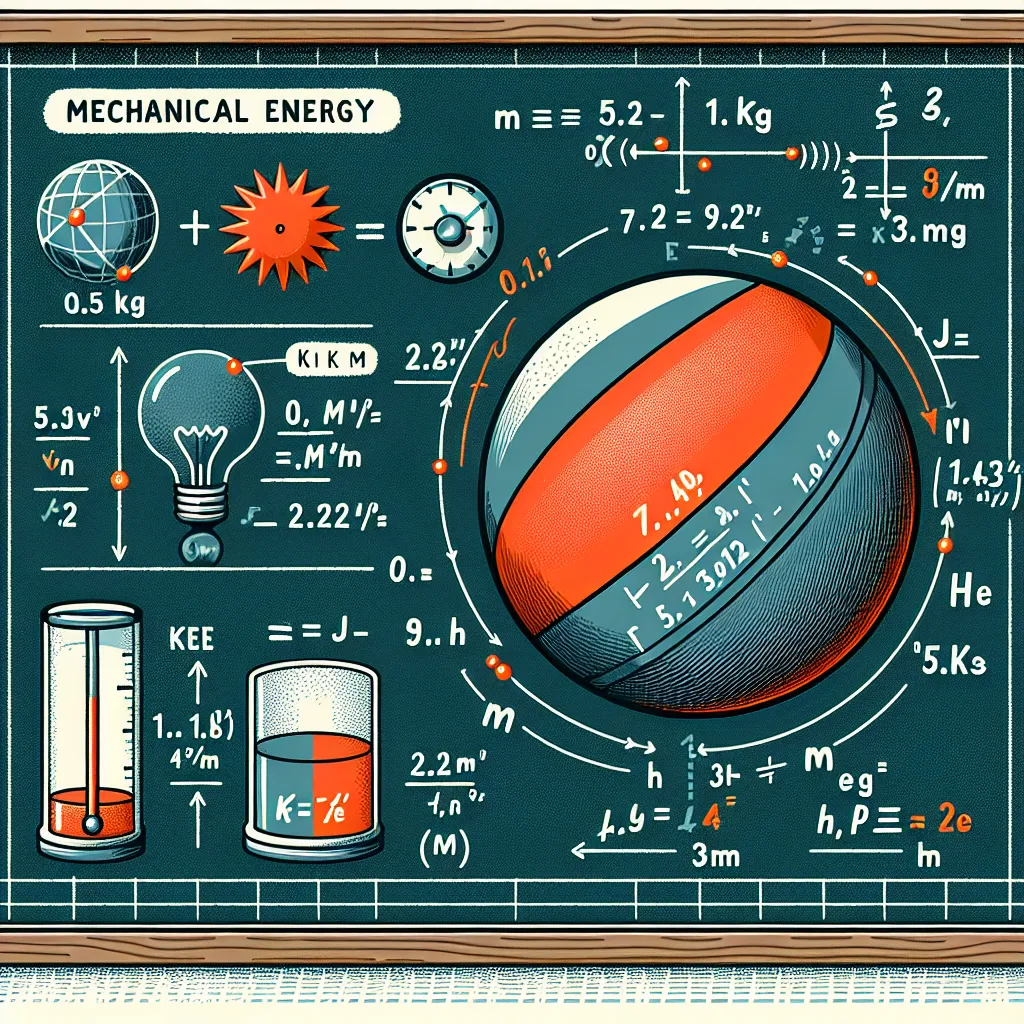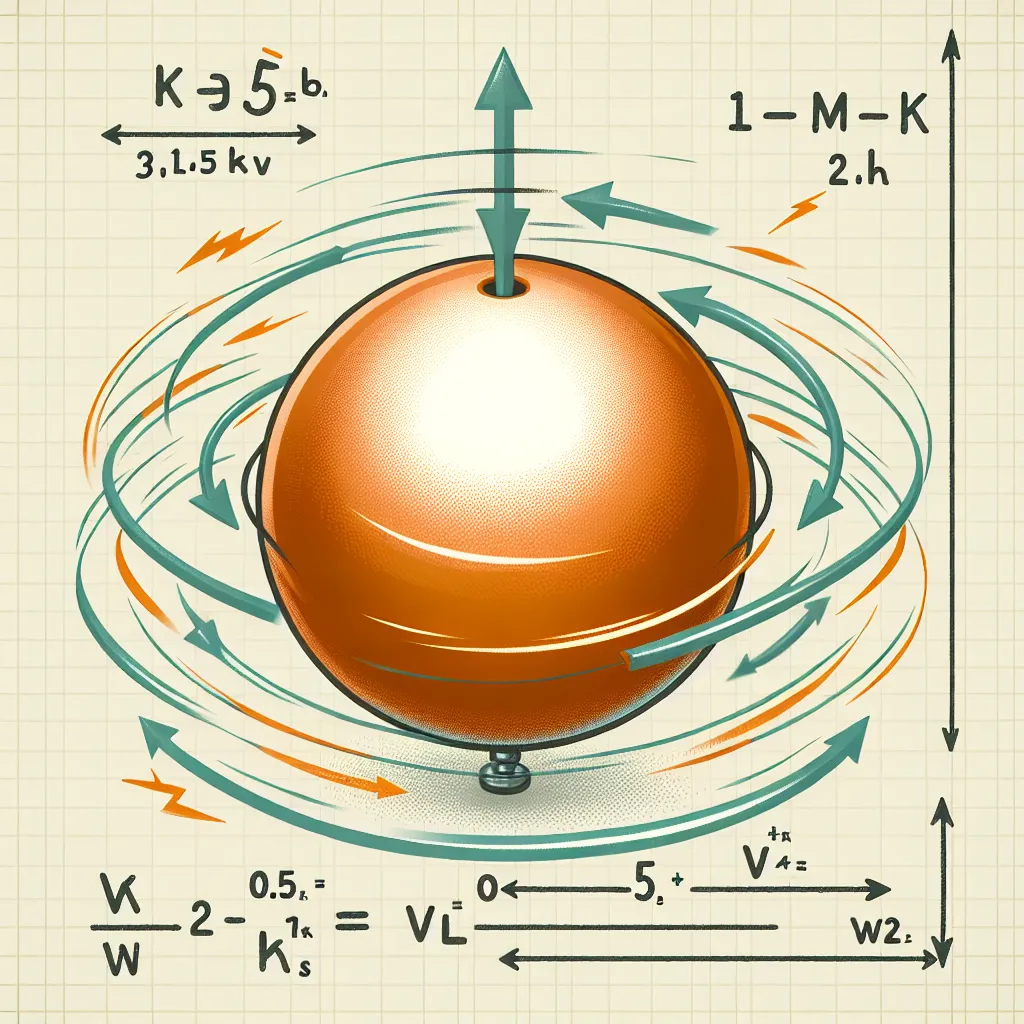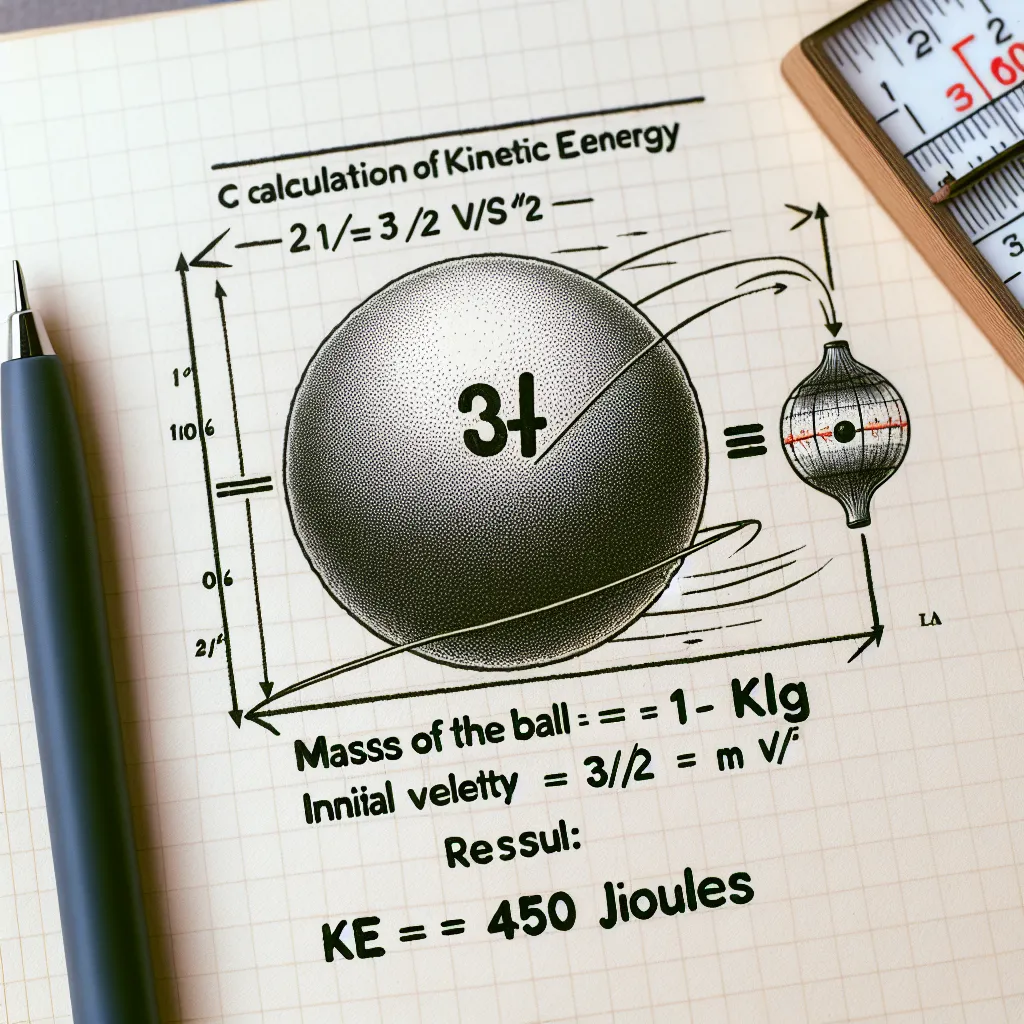Ask AI on The Internet
Question: A .1Kg ball is dropped off a ledge. The ball is travelling 12m/s when it is 3m from the ground. How much mechanical energy is in the ball?
To calculate the mechanical energy in the ball, we need to determine both its gravitational potential energy (GPE) and its kinetic energy (KE) at the point where it is 3 meters from the ground. 1. **Gravitational Potential Energy (GPE):** The formula for gravitational potential energy is: \[ \text{GPE} = m \cdot g \cdot h \] where: - \( m = 0.1 \, \text{kg} \) (mass of the ball), - \( g = 9.8 \, \text{m/s}^2 \) (acceleration due to gravity), - \( h = 3 \, \text{m} \) (height from the ground). Substituting these values into the formula gives: \[ \text{GPE} = 0.1 \times 9.8 \times 3 = 2.94 \, \text{Joules} \] 2. **Kinetic Energy (KE):** The formula for kinetic energy is: \[ \text{KE} = \frac{1}{2} m v^2 \] where: - \( m = 0.1 \, \text{kg} \) (mass of the ball), - \( v = 12 \, \text{m/s} \) (velocity of the ball). Substituting these values into the formula gives: \[ \text{KE} = \frac{1}{2} \times 0.1 \times 12^2 = 0.05 \times 144 = 7.2 \, \text{Joules} \] 3. **Total Mechanical Energy:** The total mechanical energy is the sum of the gravitational potential energy and the kinetic energy: \[ \text{Total Mechanical Energy} = \text{GPE} + \text{KE} = 2.94 \, \text{J} + 7.2 \, \text{J} = 10.14 \, \text{Joules} \] Thus, the mechanical energy in the ball when it is 3 meters from the ground is 10.14 Joules.
Mechanical energy is the sum of kinetic energy and potential energy. The kinetic energy (KE) can be calculated with the formula KE = 0.5*m*v^2, where m is the mass of the ball and v is its velocity. From the given, m = 0.1kg and v = 12 m/s Substituting the given values into the kinetic energy formula gives: KE = 0.5 * 0.1kg * (12m/s)^2 = 7.2 Joules. The potential energy (PE) can be calculated with the formula PE = m*g*h, where m is the mass of the ball, g is the acceleration due to gravity (approximately 9.8m/s^2 on Earth), and h is the height above the ground. Given that m = 0.1kg, g = 9.8 m/s^2, and h = 3 m, the potential energy is: PE = 0.1kg * 9.8m/s^2 * 3m = 2.94 Joules. The total mechanical energy is the sum of the kinetic energy and potential energy, so: ME = KE + PE = 7.2 Joules + 2.94 Joules = 10.14 Joules. Therefore, the ball has 10.14 Joules of mechanical energy.
Think your answer is better than the AI's? Post it below.
Other Most Relevant Posts:
 Mechanical Energy Transfer: Calculating Potential Energy Change from Ball's Initial to Maximum Height
Mechanical Energy Transfer: Calculating Potential Energy Change from Ball's Initial to Maximum Height
Question Tags
If you want your question answered by an AI, click here.






Post your own comment: